Papers by martin schwacha
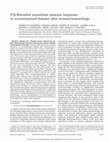
American Journal of Physiology-Cell Physiology, 2001
Recent studies indicate that immune responses in proestrus females are maintained after trauma-he... more Recent studies indicate that immune responses in proestrus females are maintained after trauma-hemorrhage but markedly depressed in ovariectomized females under such conditions. The current study tested the hypothesis that the decreased estrogen levels after ovariectomy are responsible for this immune depression. To study this hypothesis, ovariectomized female CBA/J mice were subjected to laparotomy (i.e., soft tissue trauma) and hemorrhagic shock (35 ± 5 mmHg for 90 min, then resuscitated) or sham operation. The mice received either 17β-estradiol (E2; 100 μg/25 g body wt) or vehicle subcutaneously during resuscitation. Immune cells were isolated 24 h thereafter. Splenocyte proliferation and interferon-γ, interleukin (IL)-2, and IL-3 release were significantly depressed after trauma-hemorrhage in vehicle-treated mice, whereas these functions were maintained in E2-treated mice. Peritoneal macrophage IL-1β and IL-6 release and splenic macrophage IL-6 and IL-12 release were also signif...

Proceedings of the National Academy of Sciences, 2006
Monitoring genome-wide, cell-specific responses to human disease, although challenging, holds gre... more Monitoring genome-wide, cell-specific responses to human disease, although challenging, holds great promise for the future of medicine. Patients with injuries severe enough to develop multiple organ dysfunction syndrome have multiple immune derangements, including T cell apoptosis and anergy combined with depressed monocyte antigen presentation. Genome-wide expression analysis of highly enriched circulating leukocyte subpopulations, combined with cell-specific pathway analyses, offers an opportunity to discover leukocyte regulatory networks in critically injured patients. Severe injury induced significant changes in T cell (5,693 genes), monocyte (2,801 genes), and total leukocyte (3,437 genes) transcriptomes, with only 911 of these genes common to all three cell populations (12%). T cell-specific pathway analyses identified increased gene expression of several inhibitory receptors (PD-1, CD152, NRP-1, and Lag3) and concomitant decreases in stimulatory receptors (CD28, CD4, and IL-2...
Nature, 2005
In the labelling of Fig. 1 of this Letter, the spelling of 'D. semicelatum' was accidentally reve... more In the labelling of Fig. 1 of this Letter, the spelling of 'D. semicelatum' was accidentally reversed to read 'D. mutalecimes'.
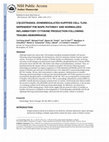
Molecular Immunology, 2007
Although studies have shown that 17β-estradiol (estradiol) normalized Kupffer cell function follo... more Although studies have shown that 17β-estradiol (estradiol) normalized Kupffer cell function following trauma-hemorrhage, the mechanism by which E2 maintains immune function remains unclear. Activation of Toll-like receptor 4 (TLR4) initiates an inflammatory cascade, involving activation of p38 mitogen-activated protein kinase (MAPK), phosphatidylinositol 3-kinase (PI3K), and nuclear factor-κB (NF-κB). This leads to the release of proinflammatory cytokines. Thus, we hypothesized that the salutary effects of estradiol on Kupffer cell function following traumahemorrhage are mediated via negative regulation of TLR4-dependent p38 MAPK and NF-κB. TLR4 mutant (C3H/HeJ) and wild type (C3H/HeOuJ) mice were subjected to trauma-hemorrhage (mean BP 35±5 mmHg ~90 min, then resuscitation) or sham operation. Administration of estradiol following trauma-hemorrhage in wild type mice decreased Kupffer cell TLR4 expression as well as prevented the phosphorylation of p38 MAPK and NF-κB. This was accompanied by normalization of Kupffer cell production capacities of IL-6, TNF-α, macrophage inflammatory protein (MIP)-1α, and MIP-2 and the decrease in plasma cytokine levels. In contrast, TLR4 mutant mice did not exhibit the increase in Kupffer cell p38 MAPK and NF-κB activation, cytokine production, or the increase in circulating cytokine levels following trauma-hemorrhage. No difference was observed in activation of PI3K among groups. These results suggest that the protective effect of estradiol on Kupffer cell function is mediated via downregulation of TLR4-dependent p38 MAPK and NF-κB signaling following trauma-hemorrhage, which prevents the systemic release of cytokines.
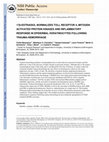
Molecular Immunology, 2007
Trauma-hemorrhage produces immunodepression in males but not in proestrus females and this differ... more Trauma-hemorrhage produces immunodepression in males but not in proestrus females and this difference is due to the presence of high estrogen in proestrus females. Although skin is the largest immunological organ of the body and is considered the first line of defense, no study to-date has examined whether trauma-hemorrhage has any effects on keratinocytes which are the major epidermal cell type (>90%) of skin. We therefore examined whether epidermal keratinocytes inflammatory response and the signal transduction pathways involved in the inflammatory response are altered following trauma-hemorrhage. C3H/HeN mice were subjected to trauma-hemorrhage and 2 hrs thereafter; keratinocytes were harvested and stimulated with LPS for 24 hrs (5μg/ml). Inflammatory mediators, Toll like receptor (TLR) and myeloid differentiation adaptor protein (MyD88) expression, and the activation of mitogen-activated protein kinase (MAPK) were determined. Trauma-hemorrhage increased the production of IL-6, IL-10, IL-12 and TNF-α, enhanced the expression of TLR4, MyD88 as well as the activation of MAPK proteins (p38, ERK and JNK) in epidermal keratinocytes. However, administration of a single dose of 17β-estradiol following trauma-hemorrhage prevented the increase in these inflammatory parameters under those conditions. These findings suggest that 17β-estradiol normalizes epidermal keratinocytes inflammatory responses following trauma-hemorrhage by preventing the upregulation of TLR4mediated MAPK activation.
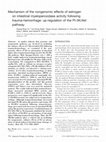
Journal of Leukocyte Biology, 2007
As studies indicate that genomic and nongenomic pathways are involved in mediating the salutary e... more As studies indicate that genomic and nongenomic pathways are involved in mediating the salutary effects of 17β-estradiol (E2) following trauma-hemorrhage, we examined if the nongenomic effects of E2 on attenuation of intestinal injury after trauma-hemorrhage involve the PI-3K/Akt pathway. Male Sprague-Dawley rats (∼300 g body weight) underwent trauma-hemorrhage (mean blood pressure 40 mmHg for 90 min), followed by resuscitation. E2 conjugated to BSA (E2-BSA; 1 mg/Kg E2), with or without an estrogen receptor antagonist (ICI 182,780), a PI-3K inhibitor (Wortmannin), or vehicle, was injected i.v. during resuscitation. At 2 h after trauma-hemorrhage or sham operation, intestinal myeloperoxidase (MPO) activity, ICAM-1, cytokine-induced neutrophil chemoattractant (CINC)-1, CINC-3, and IL-6 levels were measured (n=6 rats/group). Intestinal PI-3K, phosphorylation of Akt (p-Akt), and Akt protein expressions were also determined. One-way ANOVA and Tukey’s test were used for statistical analys...

The Journal of Immunology, 2009
Kupffer cells are macrophages in the liver whose major role is to clear circulating pathogens. De... more Kupffer cells are macrophages in the liver whose major role is to clear circulating pathogens. Decreased phagocytic capacity of Kupffer cells may result in severe systemic infection. We tested the hypothesis that the depressed Kupffer cell phagocytic capacity following trauma-hemorrhage is enhanced by estrogen administration and this occurs due to maintenance of Fc receptor expression and cellular ATP content via the activation of Akt. Male C3H/HeN mice were subjected to sham operation or trauma-hemorrhage and sacrificed 2 h thereafter. Estrogen, with or without an estrogen receptor antagonist (ICI 182,780), a PI3K inhibitor (Wortmannin), or vehicle, was injected during resuscitation. Kupffer cell phagocytic capacity was tested in vivo. The expression of Fc receptors, of Akt phosphorylation, of p38 MAPK phosphorylation, of DNA binding activity of NF-κB and ATP content of Kupffer cells were also determined. Trauma-hemorrhage suppressed Kupffer cell phagocytosis by decreasing Fc recep...
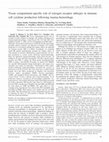
Journal of Applied Physiology, 2006
Although 17β-estradiol administration following trauma-hemorrhage attenuates plasma cytokines and... more Although 17β-estradiol administration following trauma-hemorrhage attenuates plasma cytokines and alteration in immune cell cytokine production, it is not known whether the salutary effects are mediated via estrogen receptor (ER)-α or ER-β. Accordingly, we examined which ER subtype predominantly mediates the salutary effects of 17β-estradiol on systemic inflammatory response/immune cell cytokine production in various tissues following trauma-hemorrhage. Male rats underwent trauma-hemorrhage (mean blood pressure: 40 mmHg for 90 min) and fluid resuscitation. The ER-α agonist propyl pyrazole triol (PPT; 5 μg/kg), the ER-β agonist diarylpropionitrile (DPN; 5 μg/kg), 17β-estradiol (50 μg/kg), or vehicle (10% DMSO) was injected subcutaneously during resuscitation, and various measurements were made 24 h thereafter. 17β-Estradiol or PPT administration following trauma-hemorrhage prevented the increase in plasma IL-6 and IL-10 levels that were observed in vehicle-treated animals. IL-6 and T...
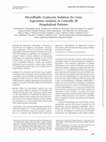
Clinical Chemistry, 2008
Background: Microarray technology is becoming a powerful tool for diagnostic, therapeutic, and pr... more Background: Microarray technology is becoming a powerful tool for diagnostic, therapeutic, and prognostic applications. There is at present no consensus regarding the optimal technique to isolate nucleic acids from blood leukocyte populations for subsequent expression analyses. Current collection and processing techniques pose significant challenges in the clinical setting. Here, we report the clinical validation of a novel microfluidic leukocyte nucleic acid isolation technique for gene expression analysis from critically ill, hospitalized patients that can be readily used on small volumes of blood.Methods: We processed whole blood from hospitalized patients after burn injury and severe blunt trauma according to the microfluidic and standard macroscale leukocyte isolation protocol. Side-by-side comparison of RNA quantity, quality, and genome-wide expression patterns was used to clinically validate the microfluidic technique.Results: When the microfluidic protocol was used for proce...
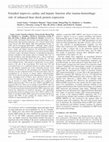
American Journal of Physiology-Regulatory, Integrative and Comparative Physiology, 2005
Although studies indicate that 17β-estradiol administration after trauma-hemorrhage (T-H) improve... more Although studies indicate that 17β-estradiol administration after trauma-hemorrhage (T-H) improves cardiac and hepatic functions, the underlying mechanisms remain unclear. Because the induction of heat shock proteins (HSPs) can protect cardiac and hepatic functions, we hypothesized that these proteins contribute to the salutary effects of estradiol after T-H. To test this hypothesis, male Sprague-Dawley rats (∼300 g) underwent laparotomy and hemorrhagic shock (35–40 mmHg for ∼90 min) followed by resuscitation with four times the shed blood volume in the form of Ringer lactate. 17β-estradiol (1 mg/kg body wt) was administered at the end of the resuscitation. Five hours after T-H and resuscitation there was a significant decrease in cardiac output, positive and negative maximal rate of left ventricular pressure. Liver function as determined by bile production and indocyanine green clearance was also compromised after T-H and resuscitation. This was accompanied by an increase in plasma...
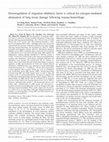
American Journal of Physiology-Lung Cellular and Molecular Physiology, 2007
Although studies have shown that 17β-estradiol (E2) prevents neutrophil infiltration and organ da... more Although studies have shown that 17β-estradiol (E2) prevents neutrophil infiltration and organ damage following trauma-hemorrhage, the mechanism by which E2inhibits neutrophil transmigration remains unknown. Macrophage migration inhibitory factor (MIF) is thought to play a central role in exacerbation of inflammation and is associated with lung injury. MIF regulates the inflammatory response through modulation of Toll-like receptor 4 (TLR4). Activation of TLR4 results in the release of proinflammatory cytokines and chemokines, which induce neutrophil infiltration and subsequent tissue damage. We hypothesized that E2mediates its salutary effects in the lung following trauma-hemorrhage via negative regulation of MIF and modulation of TLR4 and cytokine-induced chemotaxis. C3H/HeOuJ mice were subjected to trauma-hemorrhage (mean blood pressure 35 ± 5 mmHg for ∼90 min, then resuscitation) or sham operation. Mice received vehicle, E2, or E2in combination with recombinant mouse MIF protein...
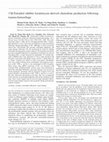
American Journal of Physiology-Lung Cellular and Molecular Physiology, 2006
Neutrophil infiltration is a key step in the development of organ dysfunction following trauma-he... more Neutrophil infiltration is a key step in the development of organ dysfunction following trauma-hemorrhage (T-H). Although we have previously shown that 17β-estradiol (E2) prevents neutrophil infiltration and organ damage following T-H, the mechanism by which E2 inhibits neutrophil transmigration remains unknown. We hypothesized that E2 prevents neutrophil infiltration via modulation of keratinocyte-derived chemokine (KC), a major attractant for neutrophils. To examine this, male C3H/HeN mice were subjected to T-H or sham operation and thereafter resuscitated with Ringer lactate and E2 (1 mg/kg body wt) or vehicle. Animals were killed 2 h after resuscitation, and Kupffer cells were isolated. Plasma levels and Kupffer cell production capacities of KC, TNF-α, and IL-6 were determined by BD Cytometric Bead Arrays; lung mRNA expression of KC was measured with real-time PCR; myeloperoxidase activity assays were performed to determine neutrophil infiltration, and organ damage was assessed ...

American Journal of Physiology-Heart and Circulatory Physiology, 2006
Although endothelin-1 (ET-1) induces vasoconstriction, it remains unknown whether 17β-estradiol (... more Although endothelin-1 (ET-1) induces vasoconstriction, it remains unknown whether 17β-estradiol (E2) treatment following trauma-hemorrhage alters these ET-1-induced vasoconstrictive effects. In addition, the role of the specific estrogen receptor (ER) subtypes (ER-α and ER-β) and the endothelium-localized downstream mechanisms of actions of E2remain unclear. We hypothesized that E2attenuates increased ET-1-induced vasoconstriction following trauma-hemorrhage via an ER-β-mediated pathway. To study this, aortic rings were isolated from male Sprague-Dawley rats following trauma-hemorrhage with or without E2treatment, and alterations in tension were determined in vitro. Dose-response curves to ET-1 were determined, and the vasoactive properties of E2, propylpyrazole triol (PPT, ER-α agonist), and diarylpropionitrile (DPN, ER-β agonist) were determined. The results showed that trauma-hemorrhage significantly increased ET-1-induced vasoconstriction; however, administration of E2normalized...
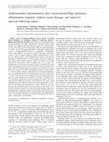
American Journal of Physiology-Gastrointestinal and Liver Physiology, 2006
Although androstenediol (adiol or 5-androstene-3β,17β-diol), a metabolite of dehydroepiandrostero... more Although androstenediol (adiol or 5-androstene-3β,17β-diol), a metabolite of dehydroepiandrosterone (DHEA), has protective effects following trauma-hemorrhage (T-H), it remains unknown whether administration of adiol has any salutary effects on the inflammatory response and outcome following a combined insult of T-H and sepsis. Male rats underwent T-H shock [mean arterial pressure (MAP) 40 mmHg for 90 min] followed by resuscitation. Adiol (1 mg/kg body wt) or vehicle was administered at the end of resuscitation. Sepsis was induced by cecal ligation and puncture (CLP) at 20 h after T-H or sham operation. Five hours after CLP, plasma and tissue samples were analyzed for cytokines (IL-6 and IL-10), MPO, neutrophil chemotactic factor (CINC-3), and liver injury (alanine aminotransferase and lactate dehydrogenase). In another group of rats, the gangrenous cecum was removed at 10 h after CLP, the cavity was irrigated with warm saline and closed in layers, and mortality was recorded over 10...

American Journal of Physiology-Endocrinology and Metabolism, 2006
Studies have shown salutary effects of 17β-estradiol following trauma-hemorrhage on different cel... more Studies have shown salutary effects of 17β-estradiol following trauma-hemorrhage on different cell types. 17β-Estradiol also induces improved circulation via relaxation of the aorta and has an anti-apoptotic effect on endothelial cells. Because mitochondria play a pivotal role in apoptosis, we hypothesized that 17β-estradiol will maintain mitochondrial function and will have protective effects against H2O2-induced apoptosis in endothelial cells. Endothelial cells were isolated from rats' aorta and cultured in the presence or absence of H2O2, a potent inducer of apoptosis. In additional studies, endothelial cells were pretreated with 17β-estradiol. Flow cytometry analysis revealed H2O2-induced apoptosis in 80.9% of endothelial cells; however, prior treatment of endothelial cells with 17β-estradiol resulted in an ∼40% reduction in apoptosis. This protective effect of 17β-estradiol was abrogated when endothelial cells were cultured in the presence ICI-182780, indicating the involve...

American Journal of Physiology-Cell Physiology, 2006
Traumatic and/or surgical injury as well as hemorrhage induces profound suppression of cellular i... more Traumatic and/or surgical injury as well as hemorrhage induces profound suppression of cellular immunity. Although local anesthetics have been shown to impair immune responses, it remains unclear whether lidocaine affects lymphocyte functions following trauma-hemorrhage (T-H). We hypothesized that lidocaine will potentiate the suppression of lymphocyte functions after T-H. To test this, we randomly assigned male C3H/HeN (6–8 wk) mice to sham operation or T-H. T-H was induced by midline laparotomy and ∼90 min of hemorrhagic shock (blood pressure 35 mmHg), followed by fluid resuscitation (4× shed blood volume in the form of Ringer lactate). Two hours later, the mice were killed and splenocytes and bone marrow cells were isolated. The effects of lidocaine on concanavalin A-stimulated splenocyte proliferation and cytokine production in both sham-operated and T-H mice were assessed. The effects of lidocaine on LPS-stimulated bone marrow cell proliferation and cytokine production were als...
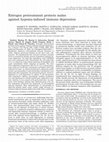
AJP: Cell Physiology, 2001
Hypoxemia depresses cell-mediated immune functions in males, whereas proestrous females do not sh... more Hypoxemia depresses cell-mediated immune functions in males, whereas proestrous females do not show such a depression. We hypothesized that elevated systemic estradiol levels in proestrous females prevent hypoxemia-induced immune depression. To study this hypothesis, male C3H/HeN mice were pretreated with 17β-estradiol (E2, 40 μg/kg body wt sc) or vehicle for 3 days before induction of hypoxemia and again immediately before induction of hypoxia. The mice were subjected to hypoxemia (95% N2-5% O2) or sham hypoxemia (room air) for 60 min, and plasma and spleen cells were collected 2 h later. In vehicle-treated mice, splenocyte proliferation and interleukin-2 and interleukin-3 production were depressed after hypoxemia. E2-pretreated animals, however, displayed no such depression in splenic T cell parameters after hypoxemia. Splenic macrophage cytokine production was also depressed in vehicle-treated mice subjected to hypoxia, whereas it was normal in E2-pretreated mice. In summary, the...
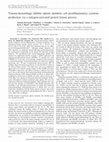
American Journal of Physiology-Cell Physiology, 2008
Although splenic dendritic cell (DC) functions are markedly altered following trauma-hemorrhage, ... more Although splenic dendritic cell (DC) functions are markedly altered following trauma-hemorrhage, the mechanism(s) responsible for the altered DC functions remains unknown. We hypothesized that trauma-hemorrhage inhibits DC function via suppressing toll-like receptor 4 (TLR4) expression and mitogen-activated protein kinases (MAPKs). To examine this, male C3H/HeN (6–8 wk) mice were randomly assigned to sham operation or trauma-hemorrhage. Trauma-hemorrhage was induced by midline laparotomy and ∼90 min of hypotension [blood pressure (BP) 35 mmHg], followed by fluid resuscitation (4× the shed blood volume in the form of Ringer lactate). Two hours later, mice were euthanized, splenic DCs were isolated, and the changes in their MAPK activation, TLR4-MD-2 expression, and ability to produce cytokines were measured. The results indicate that trauma-hemorrhage downregulated the lipopolysaccharide (LPS)-induced MAPK activation in splenic DCs. In addition to the decrease in MAPK activation, sur...
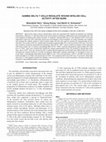
Shock, 2014
Major burns induce immune complications, which are associated with myeloid cell activation by ill... more Major burns induce immune complications, which are associated with myeloid cell activation by ill-defined mechanisms. Although +% T cells have been shown to be important in postinjury inflammation and wound healing, their role in the regulation of myeloid cells remains unknown. To study this, wild-type (WT) and +% T cell deficient (%TCR-/-) mice were subjected to major burn (25% total body surface area, third degree) or sham treatment. At 3 days thereafter, skin samples were assayed for cytokine content or used to isolate single cells that were used for myeloid cell characterization by flow cytometry. The number of CD11b + myeloid cells increased by approximately 75% in the wound skin of WT mice. This influx was caused by increased myeloid-derived suppressor cells (CD11b + GR1 +) whose numbers increased 19-fold compared with those of sham skin. In contrast, macrophage (MØ; CD11b + F4/80 +) numbers decreased by approximately 50% after burn. In %TCR-/mice, burn increased the myeloid cell numbers approximately 5-fold. The increase in myeloid cells at the injury site of %TCR-/mice was caused by both a myeloid-derived suppressor cell (50-fold) and a MØ (2-fold) influx. Burn increased skin cytokine levels for a number of prototypic inflammatory cytokines (interleukin 1", interleukin 6, tumor necrosis factor-!, macrophage inflammatory protein [MIP] 1", etc). Tumor necrosis factor-!, MIP-1!, and MIP-1" levels were further elevated (2-to 3-fold) in the injured skin of %TCR-/mice compared with those of WT mice. In conclusion, these data show that +% T cells regulate myeloid cell infiltration of the wound site and act to quell inflammation, thereby promoting the transition to the proliferative phase of wound healing.
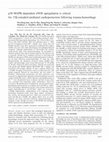
AJP: Heart and Circulatory Physiology, 2008
Studies have shown that p38 MAPK and nitric oxide (NO), generated by endothelial NO synthase (eNO... more Studies have shown that p38 MAPK and nitric oxide (NO), generated by endothelial NO synthase (eNOS), play key roles under physiological and pathophysiological conditions. Although administration of 17β-estradiol (E2) protects cardiovascular injury from trauma-hemorrhage, the mechanism by which E2 produces those effects remains unknown. Our objective was to determine whether the E2-mediated activation of myocardial p38 MAPK and subsequent eNOS expression/phosphorylation would protect the heart following trauma-hemorrhage. To study this, male Sprague-Dawley rats underwent soft-tissue trauma (midline laparatomy) and hemorrhagic shock (mean blood pressure 35–40 mmHg for 90 min), followed by fluid resuscitation. Animals were pretreated with specific p38 MAPK inhibitor SB-203580 (SB; 2 mg/kg), and nonselective NO synthase inhibitor NG-nitro-l-arginine methyl ester (l-NAME; 30 mg/kg) 30 min before vehicle (cyclodextrin) or E2 (100 μg/kg) treatment, followed by resuscitation, and were kille...











Uploads
Papers by martin schwacha